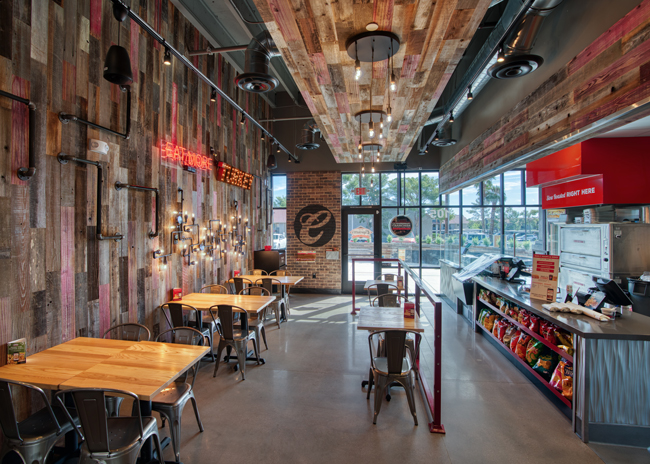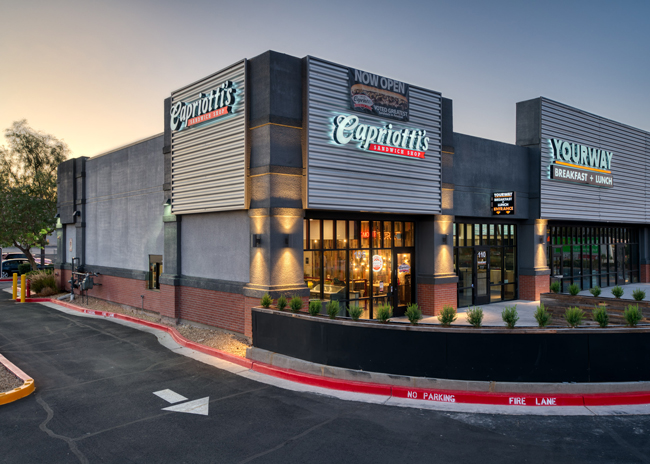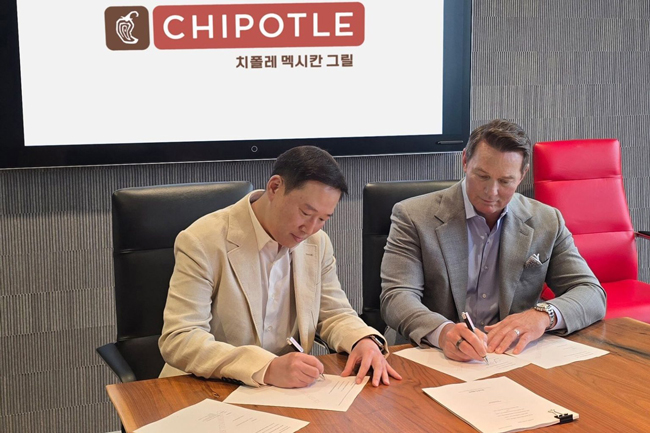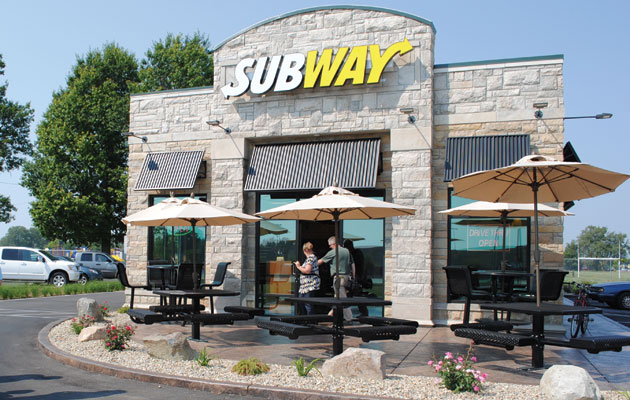Every time a restaurant company opens a new location, it's taking on a level of risk. Will a specific site work? Will it have sufficient traffic, parking, visibility?
 David BloomLarge chains minimize this risk by thoroughly doing their homework and research on every single site. One such company is Capriotti's, which has 185 restaurants in 30 states. The Las Vegas-based company also owns Wing Zone, the second-largest fast-casual wing chain in the country.
David BloomLarge chains minimize this risk by thoroughly doing their homework and research on every single site. One such company is Capriotti's, which has 185 restaurants in 30 states. The Las Vegas-based company also owns Wing Zone, the second-largest fast-casual wing chain in the country.
David Bloom, chief development and growth officer for both brands, talked with rd+d about best practices for site selection.
1. Use online subscription services
Before approving a new site, restaurant companies used to run feasibility studies, but these are now "a bit old school," says Bloom, not to mention expensive, at around $50,000 a pop.
Instead, Capriotti's subscribes to Tango Analytics (there are many similar companies, that use similar data). Tango Analytics, Bloom says, acquires cellular traffic data "so you know where people live, work, where they drive, how many stops they make, and when. You can track millions of data points of where people are going and what they're doing."
Tango Analytics, he adds, is much less expensive than a feasibility study, and much faster. "Literally I can drive up and see how a site's doing. I can look at 12 sites a day and compare them. This gives me consistent data. If it shows up as a problem I can dig into it. You're not looking for home runs; you're looking to eliminate risk. You're trying to get better and smarter every year and this allows you to do it at scale, never mind cheaper. It also takes out personal opinions. It gives you an objective reason as to whether you should pursue a site or not."
 Capriotti’s uses Tango Analytics to get all the data it can about a potential new site.
Capriotti’s uses Tango Analytics to get all the data it can about a potential new site.
2. Take your competitors into account
Capriotti's also acquires its competitors' data. "You can geofence it and track their foot traffic and compare it to other stores. Or there are subscription services like Restaurant Trends," Bloom says. The downside is it's a voluntary system and you don't know if people are reporting accurately "but it gives you a sense of how that store is doing relative to the national averages and relative to other stores in the market."
It's also important to Capriotti's not to be in a strip mall with only mom-and-pop businesses that come and go. "I want a strong anchor tenant," he says. "That used to be big box but now big box retailers are struggling; certain grocery anchor tenants are good and certain other restaurant chains are good (if they're not competition).
And if a landlord won't grant site exclusivity in the lease — so no other sandwich restaurant can open nearby – Capriotti's would likely pass and look elsewhere.
3. Stick to your rules
Capriotti's doesn't stray from certain non-negotiables when looking at sites:
- The trade area scores at or above system average on its real estate analytic platform.
- Traffic counts are at least 25,000 cars daily.
- It has excellent visibility, access, egress, and ample parking.
- The site must fit its unit economic model – capex, occupancy costs and operating expenses in line.
- The site out-positions the competition or serves an underserved market.
- Don't move into a site where all other restaurants there have failed.
 It’s important to use old-school tricks when considering a new site, including walking the neighborhood.
It’s important to use old-school tricks when considering a new site, including walking the neighborhood.
4. Use algorithms
Tango Analytics is integrated with Capriotti's POS system, which means it can look at all stores and show the properties of the most successful and least successful stores in the company. Based on that, it can show how a new location would rate and what it would be likely to make in revenue. "The more stores you have, the more data you have and the more accurate it is," Bloom explains.
 Capriotti’s pays attention to competitors in a new market and looks at their data.
Capriotti’s pays attention to competitors in a new market and looks at their data.
5. Embrace old-school tactics
Beyond technology, when evaluating a potential site, you need to work with a good broker, you need to drive the neighborhood and ask other stores how business is, Bloom says. "You're still doing the boots on the ground."
But old school can be fallible, he says. Despite being personally involved in thousands of store openings, Bloom says he does not have a good feel for a site without data. "I need some information – what kind of revenues might we do at that site; what are the costs of doing business, and what's the ROI going to look like for each of those sites. And it will tell us which is the best to go with. At least I can get an ROI model that's fairly accurate."
Capriotti's also relies on franchisees' knowledge of an area and will typically conduct a market tour with them when considering a site. If the franchisees are really insistent about a site Capriotti's is not keen on, "I'll have them sign a letter saying they're taking on more risk than we want them to take on," Bloom says. "There are emotions tied up in their decision and we want them to make sure they consider them."
Capriotti's real estate team always evaluates sites, too. Once it's fixed on a site and a deal looks forthcoming, it brings in its design and construction teams "and we start doing some drawings and site surveys to see what the existing conditions are, what are the construction costs going to be, and start to get some bids on that."
6. Do not compromise
Whatever is most important to your brand, do not compromise. For Capriotti's, visibility and being properly positioned and convenient are the most vital aspects, followed by out-positioning its competition in the area.


